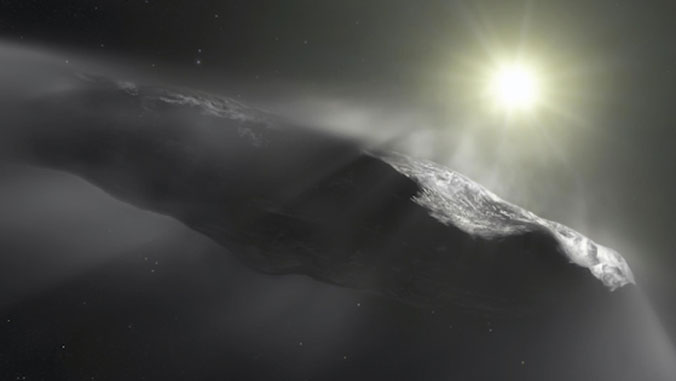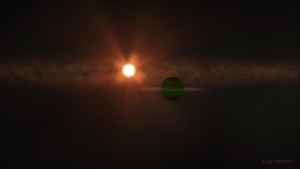
From working to determine if other planets can support life to monitoring the skies for hazardous asteroids and comets, the University of Hawaiʻi Institute for Astronomy (IfA) remains at the forefront of cutting edge space science.

On June 3, IfA Interim Director and Astronomer Karen Meech shared with the UH Board of Regents (BOR) Committee on Research and Innovation some of the units research accolades and the sheer impact IfA’s collaboration with observatories on Maunakea and Haleakalā has had on the astronomy field.
UH’s Pan-STARRS1 telescope on Haleakalā is the world leader in finding larger Near-Earth Objects that could pose a threat to the planet. IfA astronomers who operate the observatory on Maui play a fundamental role in the nation’s planetary defense program. In 2017, during routine operations, Pan-STARRS discovered the mysterious interstellar object, ʻOumuamua, the very first of its kind spotted in the solar system. The rapidly rotating object mesmerized researchers around the globe and left many scrambling to explain its origin and where it was headed.
“Most people don’t realize how close to Earth that came, within 63 Earth Moon distances,” said Meech during the BOR presentation. “That’s really close…Pan-STARRS was instrumental in discovering that.”
Vital Maunakea telescopes

Meech explained to the BOR committee how vital telescopes on Maunakea were in unraveling the headline-grabbing object’s mystique. In 2017, with Meech at the helm, IfA led an international research team that gathered data on ʻOumuamua and joined forces with observatories on Hawaiʻi Island. “We used everything on Maunakea,” Meech said. “Every telescope was providing a unique piece of science and we had to do it fast…Everyone was willing to share. Pretty much every big telescope on planet Earth was looking at that object for a week but Maunakea did the lion’s share of the analysis.”
- Related UH News story: Mysteries of interstellar ʻOumuamua part of UH speaker series, June 7, 2021
Meech’s team ruled out theories such as ʻOumuamua could be an alien spacecraft sent from a distant civilization. They suggested the interstellar object was of natural origin and possessed similar qualities, such as its red color, to objects found within our own solar system.
Life in Space
Currently, IfA astronomers are contributing to groundbreaking research on the formation of planetary systems and habitable planets. Meech explained to the Board of Regents that IfA has teamed up with other leading astronomy facilities to expand space science in understanding how life evolves, begins and where it can exist. With potential space missions on the horizon to collect essential data, IfA foresees building satellites or telescopic instruments for research quests.
This research is an example of UH Mānoa’s goals of Excellence in Research: Advancing the Research and Creative Work Enterprise (PDF) and Enhancing Student Success (PDF), two of four goals identified in the 2015–25 Strategic Plan (PDF), updated in December 2020.

